Here it is, possibly the most anticipated Android phone of all time, and at least of 2016. It’s been manufactured by one of the biggest players in the Android space, HTC but unlike the previous Google based iterations of mobile devices being the Nexus – The Pixel phone design process has been entirely controlled from start to finish by Google, this is a Phone by Google.
The hype around the device has been huge with leaks, renders (some were accurate, others not so much) and at the end of the day there’s a lot to like and we’ll go into those in detail throughout the review. Before we do though I thought it was important to explore a bit more about the evolution of Nexus through to the Pixel phones and the importance of the phones and that’s just what we did last week.
That was based on some pretty limited time with the devices and while my overall opinion of the phone is still very high, some of the initial dazzle that a new phone offers has worn off. Just to address the elephant in the room straight away, for many users the dazzle of the Pixel devices wore off pretty much immediately when they saw the price.
With the entry-level pixel starting at $1,079, and the top-level Pixel XL topping out at $1,419, the price is undoubtedly a significant factor for many, but if the price isn’t a deterrent for you, you start to get a feeling for the premium feel of the device when you unbox the device.
Google Pixel XL Hardware
The Google Pixel XL isn’t by name or nature a small device; its dimensions are very close to Samsung’s Galaxy Note line, measuring at 154.72mm wide x 75.74mm tall x 7.31mm to 8.58mm. Being a fan of big screen space and bigger phones, I like the way it feels in hand and particularly the slightly thicker feel at the top of the device, but the design isn’t without its faults.
What’s inside
The specs of the XL are very sharp — they’re undoubtedly class-leading — and there’s a lot to like about the little extras that are included compared to some of the recent top-end phones from other manufacturers.
Probably the biggest highlights for me are the ones that make the user experience go from acceptable, to being thought of as good, and then into the exceptional bracket.
| Key Specifications: | Google Pixel XL |
|---|---|
| Release date | October 2016 |
| Screen size | 5.5-inch |
| Screen technology | AMOLED |
| Resolution | 2,560 x 1,440 |
| PPI | 534 |
| Rear camera | 12.3MP |
| Front camera | 8MP |
| Chipset | Snapdragon 821 |
| Core config | 2.15GHz x 2 + 1.6GHz x 2 |
| RAM | 4GB |
| Storage |
|
| MicroSD | No |
| Battery | 3,450 mAh |
| Battery removable | — |
| Connector | USB C |
| Headphone Port | Yes |
| Headphone Location | Top |
| Speaker Configuration | Bottom |
| NFC | Yes |
| Android OS | Android 7.1 |
| Vendor skin | — |
| Dimensions | 154.72x75.74x 7.31(Bottom) 8.58(Top) mm |
| Weight | 168g |
| Colours |
|
Starting with the amount of RAM, every device in the low and mid range has 2GB, 3GB is good but having RAM to spare means a better multitasking experience for users and the 4GB in the Pixel XL means there’s plenty for even heavy users. Better still, this speaks volumes for future software updates which are likely to have greater requirements.
A device screen is not just about user experience; a quality display can make a device and poor quality can break it. Thankfully for the Pixel XL it’s not just got a good display, it’s outstanding. It’s high resolution QHD (2,560 x 1×40), the picture is crisp and clear, the color reproduction is close to true to life and the touch control is possibly the most responsive I have experienced on any phone.
My only issue with it is a minor one, it has low visibility in bright sunlight, but you can work around minor things like this.
Build quality
Make no mistake, this is a premium device and you know it from the first time you pick it up. The construction is really solid, it feels like a strong and well-made phone which is to be expected when you’re paying a premium for the device.
I have been using larger footprint phones (or “Phablets” if you will) for some time now and I’ve certainly adjusted to their size, so as I cautiously removed the XL from its box on arrival, I found the size quite natural to use. It’s not just the physical size of the Pixel XL that makes it a nice investment, but the feeling in hand is one that to date has only been matched by other, recent, top flight flagships such as the Note 7 (ignore the fireball issues for the sake of this comparison), the Galaxy S7 and dare I say it (at risk of admitting hands on time) even the iPhone 7 Plus. The Pixel XL feels premium, and goes nose to nose with the best of the current range of devices across the mobile spectrum.
What I really found interesting about the Pixel XL (and the Pixel) is that they’re not a bleeding edge, engineering wonder piece. In fact they’re far from it. We’ve seen other manufacturers try to make really unique masterpieces with their physical engineering, and the results have been – frankly – disappointing. HTC made much of the engineering in its One M9, and it was mostly a flop. LG spoke about its unique physical form factor and function in the LG G5, and it flopped too.
With the Pixel XL, it looks fairly generic, and dare I say it, a bit bland. However, that’s not to say it’s an unappealing phone; it looks like every other smartphone on the market, and can easily be mistaken for other phones. It doesn’t stand out as a Pixel. It just looks like what everyone else has, and that can be a good thing.
The screen, being the window into the device for users, has to be done right. It’s critical to a positive user experience. Having used a lot of phones over the last few years, I have used phones that have great specs on their screen but the responsiveness isn’t there which takes the shine off of what could otherwise be a very good user experience. There’s no such worries here with the Pixel XL, the screen looks great and responds extremely well to touch but I have found one drawback…
The adaptive brightness leaves a bit … no, a lot … to be desired. Quite often the Pixel XL requires manual brightness adjustment to get it right, which is a little frustrating. Important to note here is that this is more a software thing than something wrong with the hardware. The phone has the sensors to detect when adjustments are required, but the software doesn’t
- React fast enough to lighting changes, or
- Increase the brightness far enough by default.
Be wary, if you have manual brightness turned on and then go into a dark room you’ll be wanting to turn the brightness down a fair way and quickly. Putting the responsiveness to light changes aside, the screen is stunning. It runs an impressive 1440 x 2560 resolution and packing in 534 ppi which all comes together to give liquid-smooth video playback, and truly wonderful still shot display.
I have a couple of more pressing concerns around the design of the XL the first being that the placement of the volume rocker meant that it resides on the right hand side of the screen, very close to where my thumb naturally rests when I’m taking a call which has the aggravating side effect of turning the call volume down all the time. That fear was quickly alleviated however as I discovered that while the rocker is close, it’s not actually impacted by my hand while in-call which was a big relief for me. I have sold phones on very quickly after purchasing them due to this affliction.
The second concern is the bottom firing speaker which — granted — will not be an issue for most users, but for others it could be a major issue, even a deal breaker. The main reason being that when you hold the phone in landscape mode to play games or watch video your hands naturally hold the device in such a way that the speaker is blocked. Even at full volume, you have to be in a relatively quiet room to hear the playback.
If you (like me) put your phone on your desk at work the bottom firing speaker actually fits really well. It means notifications are audible and can be turned down to be very quiet and not intrude on your work mates’ days. The other reason that I quite like the speaker is that the sound quality is very good for music playback, particularly when you consider the physical size of it. Pro Tip: There is a notable difference in sound when the phone is on a table and holding the device in free air away from a solid surface.
Clearly (as there always is when manufacturing devices) there has been some give and take on design factors to meet physical size requirements as well as functionality of the device. While there are some minor points to nit pick at, there’s a lot to like about the design factors in the Pixel XL.
Google Pixel XL Camera
For the current generation of smartphones, the camera is one of the features that is outright going to be a deal breaker if the manufacturer get it wrong, a case in point is the Nexus 5X from last year – if the camera was good, the phone would have been tolerable, but with other minor failings the camera (and primarily the camera software) made the phone go from ok to complete train wreck. Others at Ausdroid couldn’t wait to get rid of the Nexus 5X.
Thankfully the camera on the Pixel XL isn’t just good “on paper” (with a DXOMark rating of 89) but it’s good in practice for photography novices such as myself; very good in fact. But first let’s go into a bit more about the actual capabilities.
The primary camera is a 12.3MP camera with an f/2.0 aperture. The megapixels don’t really matter anymore; the determination as to whether a camera is good or not really doesn’t turn on this anymore. Rather, things like aperture, stabilisation and image quality make that call, and on those fronts, the Pixel XL does quite well. The aperture at f/2.0 isn’t the fastest we’ve seen in mobiles this year, with Samsung and LG getting down to f/1.7 and f/1.8 respectively. There is a measurable difference between 1.7 and 2.0, but it’s not enough to ruin the camera. Far from it.
The Pixel XL camera is notable for its lack of Optical Image Stabilisation (OIS), something we’ve come to expect in higher-end smartphone cameras. Instead of OIS — which is implemented in hardware — the Pixel features EIS (Electronic Image Stabilisation) which is implemented in software. The downside is that OIS can provide a more natural result, but it can’t really be upgraded or changed in software. OIS is basically a physical gyroscope that the image sensor coupled with, to try and reduce the impact of physical movement like a slightly shaking hand.
OIS is good for still photos, and for compensating for movement up to a certain degree. However, it is possible throw OIS off, and that’s where having something like EIS can help, because software can do a lot more than hardware-only compensation. It isn’t perfect, though.
On the Pixel XL, Google’s implementation of EIS is as complex as it is successful. Google has implemented several systems to improve image clarity, even in the trying low light situations which test lesser cameras.
When active the camera isn’t just passing the sensor feed to the screen, it is actively sampling the image and ensuring that the second you click the shutter button that image is captured, this is because the previous few seconds (or microseconds) is actually being buffered.
To combat movement, Google’s engineers have also tapped into the phone’s sensors, this allows the software to know exactly how the device is moving and compensate in software continuously, it’s almost like giving the Pixel a Jedi’s precognition abilities. The Pixel also uses HDR in combination with the image cache to improve image quality, decrease noise and combat motion.
Overall, Google has demonstrated exactly what they can do when they control the software, are involved with designing the sensor with Sony, and control the device end to end. If you were looking for one example of why Google should make their own hardware, the Pixel’s still camera is that example.
When you go beyond the standard still shots that the main camera can capture and into video, the capabilities of the camera change slightly and you will see the EIS in action vs OIS that many are talking about being missing. More on that below with the video sample
The secondary or “selfie” camera is an 8 MP with an f/2.4 aperture that is quite capable in most lighting conditions. There will be some instances where you’re not going to get ideal results with your first attempt, or if the lighting is poor enough you may not get a good photo at all but this is very much isolated to the selfie camera.
While some people bemoan the lack of OIS, the big picture for me with the camera on the Pixel XL is that anyone from a novice to a pro photog can pick up the phone and take a great photo. The software is really quick to respond to your input, and there is a 99.9% chance of getting a great quality photo that is instantly sharable and doesn’t need filters to make it look acceptable.
Photo samples
I’ve taken photos in a lot of varying light conditions and found the results to be more than acceptable. We have heard of issues with lens flare in the Pixels, and while it does represent an issue that Google could (and actually will) address, it’s probably not as big a deal as made out.
For starters, in the right circumstances, every camera will demonstrate lens flare characteristics some more than others. As the issue only appears in some circumstances, and in circumstances where you probably aren’t going to be able to take a good photo anyway, it’s not something that troubles us too greatly.
While it is causing a buzz, I can’t help but feel it’s people finding fault because they can. As you can see from the images below, it’s not like the image quality is poor by any stretch, or that lens flare ruins every photo.
Video sample
As you can see from the below video, the quality of video is quite outstanding but the electronically image stabilisation (earlier discussed) can give an unnatural feel to some videos. While Google has produced some great demo videos showing off the stabilisation effects, for end users, the videos won’t always look as smooth. In fact, some of these videos look like they could be straight out of a First Person Shooter (FPS) video game.
Google Pixel XL Software
So we’re talking about Android 7.1 Nougat which brings a lot of silkiness to the user experience that wasn’t there even in the Nexus range of devices previous to the Pixels, but that is an evolution of the software not a failing of the devices at the time.
All of the menus, functions and options that are expected of Android are present in Nougat but as mentioned the user experience is far smoother than in previous versions. The handling of memory is smarter and allows the device to be more proactive about freeing memory and maintaining the user experience at a high performing level.
We don’t see what we’ve seen in the past, with apps being taken out of memory too quickly, or lag when switching between apps or loading new ones. Everything finally feels like it’s buttery smooth, something Google has been trying to tell us was there years ago, but it finally is.
The Pixel XL does not have anything by way of bloat on the device, it merely comes with a suite of Google’s own apps which include some interesting choices in app inclusion and perhaps more interestingly by exclusion.
Perhaps unsurprising, but somewhat disappointing for those of us who have been critical (but hopefully also fair) of Google’s new messaging options Allo and Duo, they’re included on the Pixel but at the cost of Hangouts which has been shuffled sideways and out the door.
For me, the most notable exclusion from the default installation was Google+ and signalled that perhaps Google have decided to continue their slow and steady move away from forcing users onto the platform. The other omission that caught my attention was Keep, possibly because I’m among those who use it regularly. Perhaps it is a major oversight on the part of Google, but it was installed quickly on my Pixel rather quickly.
We have heard reports from other users of storage running out rather quickly, and Pixel’s software not managing this appropriately, which would present a very unwelcome and unfavourable user experience. That said, we’ve not been able to replicate this ourselves … and we’ve always found Google’s software (including the ones responsible for the largest files, such as Photos) to fairly intelligently manage device storage so you don’t get “out of space” warnings in all but the most unusual of circumstances. Something to be mindful of.
Google Assistant
For anyone not familiar, Google Assistant is the replacement for Google Now, utilising voice for input. In essence, Assistant has been around for some time by different names. Officially making its first appearance in Allo back in September, Assistant builds on Google Now’s voice recognition and interactivity, while making it a bit more personable.
The problem for people like myself is that I have workflows that work well for me and until last week when IFTTT connected to Assistant as a channel, I struggled to find a daily use for it.
Since then however I’ve found myself unlocking my phone less and just using voice input to find out what I need to from Google Assistant. The problem that I still face with voice input as an Australian is my accent, if I put on a cheesy American accent it seems to understand me really well but when it fails – it’s spectacular, this needs to be fixed soon for Google home to be successful and until it is fixed with a 99% success rate I honestly can’t see Google Assistant being a mainstay daily use for the average user.
I asked Chris about this, and he said his only regular use for Assistant was to find out the day’s weather so he could dress the kids appropriately, or sometimes to set an alarm or a reminder. Beyond this, it’s not quite something every user will use every day.
Google Pixel XL Performance and Battery
Despite my best efforts to make it scream, as yet I’ve failed to find a chink in the performance armour of the Pixel XL. The combination of the specs, software and smarts connecting the two has ensured that the user experience is excellent from first boot and maintains a high level of performance throughout your day. The usual triggers for lag such as multi-tasking and fast switching between apps didn’t cause the XL any issues at all. The hardware combined with the latest OS really have done great things for the user experience in Android.
Now we come to the part of reviews I have never been fond of, the benchmarks and there are several reasons behind this. The main one being that the manufacturer’s en masse have been caught red handed manipulating the standard performance of their devices to improve benchmark scores which eliminates much of the relevance of running them.
The second and perhaps more relevant to average users is the fact that the user experience rarely matches what the benchmark tells us it should be, with the notable exception of a benchmark saying the phone is garbage, it usually is.
So why do we do it?
Basically, opinion is by nature subjective. My opinion of how good a device is will differ from the next Ausdroid (or other site) reviewer on any given device. While as we have already mentioned, manufacturers often game the system it is a more consistent and “fair” way to compare two devices than opinion based commentary.
| Device Name | PC Mark Score | Battery Life |
|---|---|---|
| Google Pixel XL | 4,955 | 8h38m |
| LG G5 | 5,798 | 6h32m |
| Samsung Galaxy S7 (SD 820) | 5,860 | 8h25m |
| Samsung Galaxy S7 (Exynos) | 4,793 | 8h08m |
| Samsung Galaxy S7 Edge (Exynos) | 4,808 | 9h06m |
| Huawei Nexus 6P | 4,380 | 6h50m |
The very abridged version of what you’re looking at there is that the Pixel XL performed well and reasonably consistently matches it with the Samsung Galaxy S7 range of devices on performance, eclipsing them fairly well on battery life and fairly comprehensively knocking over the Nexus 6P on both performance and battery.
Here’s where benchmarks get questionable, by the above benchmarks the G5 outperforms the Pixel XL and outdoes it in battery life. I asked Chris about this, as he has used both devices. While the LG G5’s performance was more than capable, those figures don’t really represent real world feel. The G5 is indeed a fast device, but in the hand, the Pixel easily has the edge — it feels faster and definitely looks faster too.
With battery life, it’s not hard to accept that Samsung’s Galaxy S7 Edge has the edge (pardon the pun) in battery life; that phone simply lasts forever. This brings us to the discussion on the Pixel’s battery.
Battery life
Daily use for me personally would easily classify as heavy use. For starters, I’m usually streaming music during the day for a few hours and if not streaming I’m probably listening to Podcasts. I have several social media accounts running throughout the day; 4 Twitter accounts, Facebook, Google+, Snapchat, LinkedIn and Instagram each tend to go off intermittently throughout the day.
I run several messaging programs and five different Gmail accounts, all which are set to sync throughout the day as well. Like everyone else does, I do some web surfing on my lunch break and generally tinker with my phone. This is all before you get to the core, basic functions of the phone being SMS and calls which I receive and make a reasonable number of both on an almost daily basis.
I’ve had phones in the past that I’ve had to keep giving top up charges to throughout the day, my most recent daily driver (Galaxy Note 5) found itself semi-permanently attached to a cable at work to ensure that I could get home with some charge left at the end of the day. When the Pixel landed in my life on launch day I made sure that the charger was in my bag when I went to work the next morning.
By lunchtime it had become apparent to me that there wasn’t actually a need to carry the charger with me, I had a fairly busy day on the phone due to some storms in SA (I’ve been in the SES for approaching 16 years) and still left my employer in the afternoon with over 40 percent battery remaining and getting to bed 17 hours or so after taking it off charge with about 25% battery remaining. If you do happen to get caught out with low battery and no charger, in the limited testing I’ve managed the battery saver mode will allow you to increase your expected run time by about 20% which is not to be scoffed at if you’re going to fall an hour short for the day.
On the off chance you’re doing something regularly that outstrips my heavy days, you’re probably either near power or have a whopping mobile battery with you most of the time. One of the more recent hardware innovations that has been welcomed by so many users is fast charge and the fast charge on the Pixel XL is really, really good. The claim is that you can gain “up to 7 hours” of battery life from just 15 minutes on charge and I’ve found that to be a pretty accurate, perhaps modest claim depending on how active your phone is during that time.
One of the pieces of software brilliance that was introduced in Marshmallow is Doze, which allows devices that have not been turned on and actively used for an extended period of time to enter a deep sleep and further extend the battery life of the device. This isn’t just based on screen on, but also engages some of the sensors allowing the device to “know” if it has been set on a table and left overnight for instance. It is definitely making a difference to the battery life on the Pixel XL but not as noticeable as with my Nexus 9 that may be used heavily for 2 days then not touched for 2.
Google Pixel XL Connectivity
With Australia being one of the few launch countries for the Google Pixel XL it is hardly surprising that it has all sorts of connectivity, every possibility that Australians could wish for. http://ausdroid.net/2016/10/14/heres-everything-need-know-pixel-phones-telstra/ It has all the required LTE bands for the Australian market with bands
LTE band 1(2100), 2(1900), 3(1800), 4(1700/2100), 5(850), 7(2600), 8(900), 12(700), 13(700), 17(700), 18(800), 19(800), 20(800), 21(1500), 26(850), 28(700), 32(1500), 38(2600), 39(1900), 40(2300), 41(2500). It supports HD voice and VoLTE although that is an issue currently. Even though Telstra told us at release that the Pixel phones would support VoLTE it seems that Telstra have not turned that feature on as it was not connecting consistently. They hope to switch it on in the coming weeks
As you would expect from Google’s foray into the high-end market, the support for other connectivity is top shelf. There is Bluetooth 4.2 which sounds great in theory but we have heard reports of bluetooth connectivity issues with some devices. Whether this is a Pixel kernel issue or the device issue is unknown but hopefully it is something Google can fix up with a firmware update. The Wifi support is for 802.11 a/b/g/n/ac, dual-band, Wi-Fi Direct, DLNA, and hotspot, all of which function perfectly fine here in Australia. The Verizon Pixels may have received an update for their Wifi connectivity but the global version has given us no issues at all.
As expected, there is NFC for Android Pay alongside the usual GPS and myriad of usual sensors. The connector is a USB v3.0 Type C 1.0 reversible connector. I was actually able to charge another phone while connected to the Pixel XL which is a nice advance over older phones that I have used. While USB Type-C is still not as widespread as hoped by now, nearly all new phones coming out these days (the higher end ones at least) are Type-C charging. As for cables, we have seen Android Auto not work with cheaper cables but good quality cables work fine. I used my Zus USB Type-C cable with my Pixel XL and Android Auto worked perfectly each and every time.
Google Pixel XL Conclusion
The Google Pixel XL is just Android in its purest form and in short it really is a close (but not quite) perfect device. For those who have had multiple Nexus devices in the past you can recognise bits of them that have been rolled into the Pixel. The hardware is a touch bland, but still maintains an heir of beauty about it with a solid construction gorgeous screen and consistently high level performance. I have heard it referred to as iPhone running Android, but at the end of the day I like the fact it is a touch bland because it still looks nice when you stop to admire it, does the job users expect of it and it doesn’t detract from the user experience.
Depending on your perspective, there are a couple of features that aren’t quite right but really shouldn’t be deal breakers for anyone. The camera with its lens flare (NB remember this will happen on all cameras) can be a downfall if you’re unaware of the cause and how to avoid it. The bottom firing speaker feels as though it was well engineered just not necessarily well thought out in its placement and of course the mentioned voice input for Google Assistant, great when it works but spectacular when it fails.
The potential deal breakers on the Pixel XL are the IP rating and the cost. For users who are looking for something with an IP rating high enough to survive you giving your phone an accidental dunk, survive spilled drinks or even take the occasional knock, the Pixel XL might not be it, though you can add a third party case to add that level of protection (which we would recommend if you’re hard on phones anyway).
It is a genuinely outstanding phone and I honestly believe it has the potential to be the best smartphone of 2016 and if you can justify the $1419 spend on a mobile device then right now, this is the phone I would recommend without hesitation.

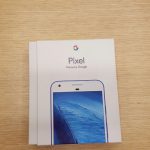

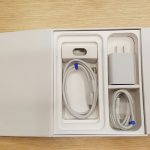
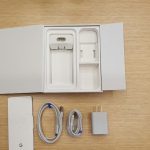

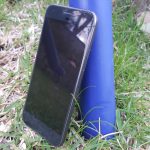
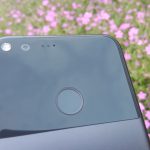













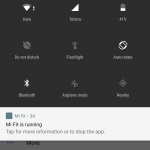

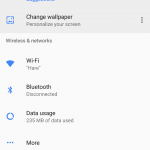
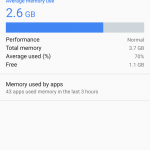

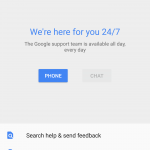
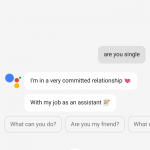

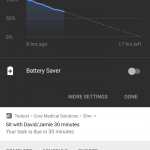




Undoubtedly a good phone, but Google have their heads up their rear ends with the pricing. Sure it’s a really good phone, but it’s certainly not anywhere near twice as good as an S7…and I can buy an Aussie-stock S7 for less than $800 now.
Great review man. For me, I’m tossing up between the 7Plus and the Pixel XL. My number one priority is the camera/video capabilities (together with the tech specs and harmony/smoothness of the phone). Your review was good and I totally agree with the FPS effect you see on the Pixel’s video. First review I’ve read (and I’ve read many reviews/seen many videos by now) which has mentioned exactly what I was thinking. Stills – XL is better – captures more details which is a breakthrough, the iPhone cannot keep up in all aspects. Video =(…. Unfortunately I take a lot… Read more »
Great job, Phil. Good review. I am in the USA in December and was wondering if it is worth buying the XL over there to save the Aussie Tax. Are their any US variants? Or is the XL the same here as in the USA?
all variants will work here although not all LTE bands.
I would consider both Allo and Duo to be “bloat” ;). I kid, I kid.
Found it a bit strange to not find this review from the main page tho guys; It both wasn’t in the near header bit with the five news articles, nor was it in the list of articles below that, over the first two pages (which went to “2 days ago” when this article says it was posted “1 day ago”. Very strange. The only reason I noticed it was even here was because of the comment window on the right of your website.
How can you give it an 8.5 for value for money? You can buy two OnePlus 3s and still have change left over compared to the cost of one XL.
And a 9.5 for build quality? It might be built well, but surely its extremely bland design should take away from the high score you gave it.
Dude, really? How can you argue that OnePlus 3 offers value for money? First, you can’t easily get them here. They aren’t designed for Australian carrier bands. You don’t get the benefits of Australian Consumer Law protections. You don’t get in store support and warranty service if needed. You don’t even get a phone with better than average build quality. Value is so much more than just the simpliatic exchange of money for an item. Yes, the OP3 is cheaper, but I wouldn’t buy one, let alone two. Bland design doesn’t detract from build quality. iPhone design is extremely bland,… Read more »
The consumer law protection and warranty service are valid points, as is the lack of band 28 with the OP3. The OP3 can be ordered online and received in a week though – that’s no different to ordering the XL online. The OP3 has a Snapdragon 820 – the XL’s 821 isn’t a significant upgrade, the OP3 has a 5.5″ AMOLED display like the XL (though it’s not QHD, but I see that as a benefit). The OP3 has 6GB of RAM, the XL has 4GB. Both run stock Android. The XL’s camera is significantly better. However, in my opinion,… Read more »
In truth, no, I haven’t tried one. As we do with all phone announcements, we got in touch with OnePlus to discuss a review device and launch/availability plans for Australia. As they told us rather briefly, they wouldn’t be launching here, and weren’t interested in sending us anything to review. With OnePlus’ level of interest in Australia, I have to say I have about the same interest in them. I’m not saying the OP3 is a bad phone. On paper, and from reviews I’ve seen elsewhere, I’m sure it’s great. I’m not sure that I’d recommend it as high in… Read more »
your basing the OP3 in cost, utilising USD to AUD conversion yet your basing the XL price off the australian price instead of the USD conversion?
No, I’m not. You can purchase a OP3 for around $AU600 and the XL with 32GB of storage is $AU1,269 or $AU1,419 with 128GB.
The XL using the US price (ie buying a US handset and getting it sent here and converting to AUD) would cost approx $AUD900 not the $1269 you quoted. Google has added Australia Tax to their cost. If you want to compare prices dont compare a US price to the Australian price and then claim its twice as much as the Australian version.
Does Google Assistant Play nicely with G Suite (aka Google Apps) accounts?
Several of my accounts are g suite, didn’t experience any issues. What surgically are you looking for?
My personal email account is on Google Apps and has been for as long as I can remember, and it works perfectly with everything in Google assistant.
Thank you for this well balanced review Phil. Can you confirm if the box comes with headphones? I don’t see any in the unboxing photos in this post. Also, I would love it if your team publish a post to compare Pixel XL and the LG V20 🙂
Mine comes with headphones (got it from the Google Store). I think it’s a requirement by Australian law.
Yeah, earbuds included. I haven’t used included earpieces for years, they’re not good quality as a rule
Once we get a V20 I’m sure we’ll be able to do up a comparison.
Excellent well balanced review. I really hope Google will try and make the Google now voice detection a little better. Its not terrible but its not good either. And that is the major drawcard of the phone. It almost seems they didn’t test it too much in noisy environment such as a car on a bitumen road. But I am not too sad. The phone is amazing and easily the best I have ever had. Just want to be able to use the voice input as much as possible.
Great job Phil and the Ausdroid team. I’m really enjoying the experience on my Pixel 5″ which reminds me of my Nexus 4 days albeit with a much better camera and refined product overall. It’s a great first effort for Google’s first official hardware and I can’t wait to see what they come up with next year.